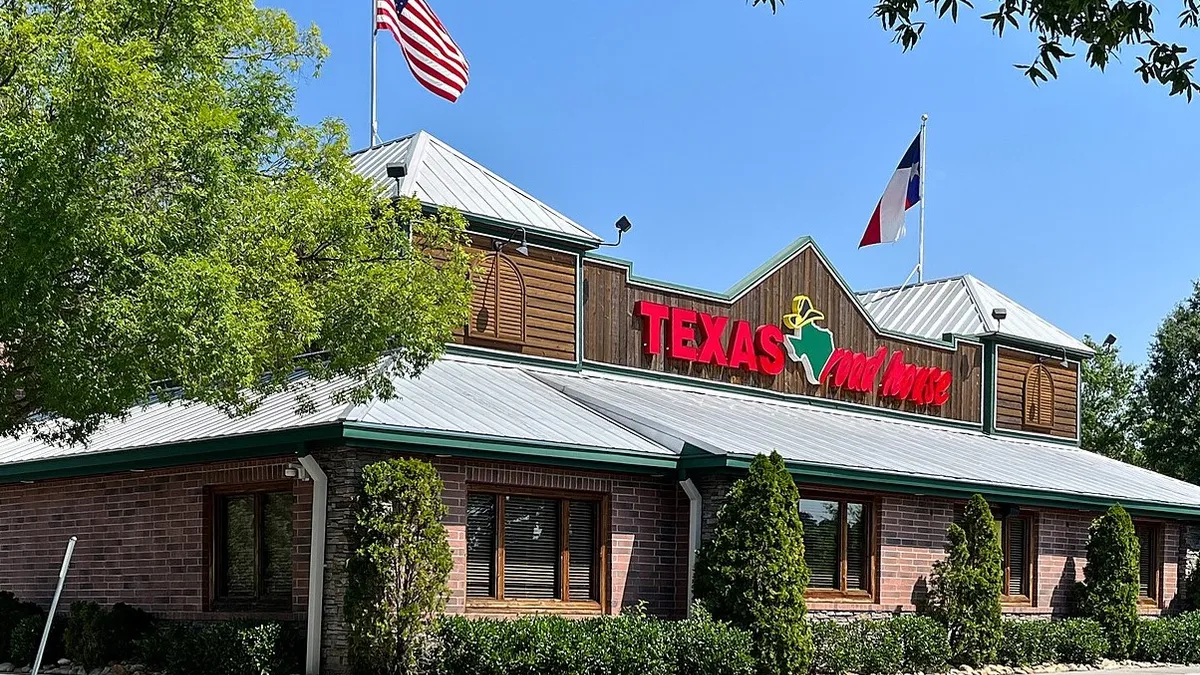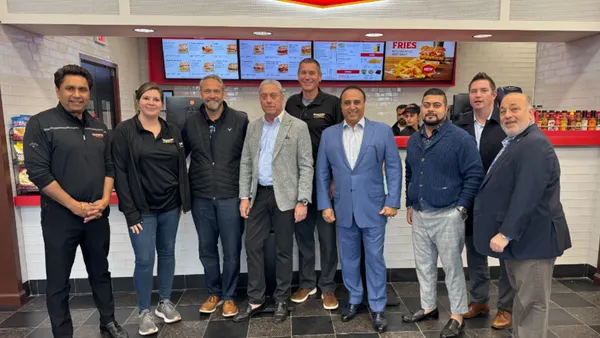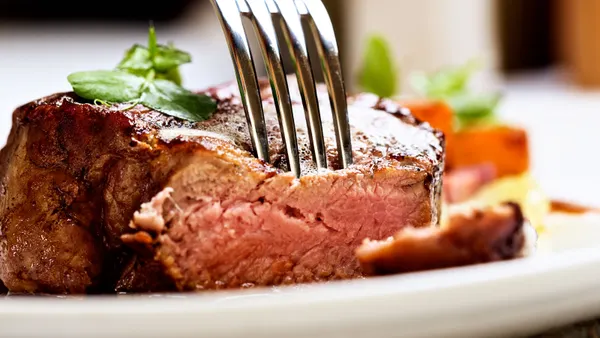Dive Brief:
- Texas Roadhouse’s Q2 same-store sales rose 9.3%, driven by 4.5% traffic growth and a 4.8% increase in average check, Michael Bailen, head of investor relations, said during the company’s earnings call Thursday. That momentum continued through the first four weeks of Q3 with comp sales up 8%.
- The chain has been improving operations by converting its back-of-house order management from tickets to digital screens to better track orders. The chain completed the implementation of mobile access for employees to get information on pay and schedules, CEO Jerry Morgan said.
- Competing casual chains have reported sluggish traffic growth or outright declines in same-store sales in recent quarters. For example, BJ’s Restaurants reported negative comps during Q2, and Darden reported flat comps in June for its fiscal Q4 2024.
Dive Insight:
Texas Roadhouse’s same-store sales have been positive for several quarters and the chain has not seen any noticeable shift in consumer spending.
“There has been significant discussion within the restaurant industry concerning the health of the consumer as well as the increased focus on promotions and discounting from others in the industry,” Morgan said. “Through the first-half of the year, we have not seen a measurable impact on our overall business from these issues. Our guests continue to recognize the quality and value we offer and do not appear to be changing their dining habits.”
The company doesn’t use promotions to drive traffic, Bailen said. Customers already recognize Texas Roadhouse for its value, especially since it has big portions.
Texas Roadhouse’s overall sales mix was flat, with growth in entrees, add-ons and soft beverages, CFO Chris Monroe said. But its alcohol mix remained negative, Bailen said, which is on par with overall industry trends.
The chain also benefited from lower commodity costs than it had predicted, Monroe said, adding that its floating beef contracts allow it to take advantage of opportune market prices during the last half of the quarter.
The company has benefited from having fully staffed restaurants with long-tenured employees, which Monroe said will allow for continued labor efficiency improvements through the end of the year. Experienced workers do their jobs more quickly and don’t requiring costly training, Bailen said.
Technology is also helping streamline operations. A few years ago it added Roadhouse Pay, which lets guests pay at the table. Texas Roadhouse has seen positive feedback from the initial deployment of its digital kitchen technology, and management expects that most of its restaurants will be converted to a digital kitchen system by the end of 2025, Morgan said.
This system has improved organization in the back of house. The technology is simplifying tasks for cooks, like monitoring cook times for steaks. It has led to a “calmer environment” since cooks no longer have a line of 50 paper checks to review, which can be intimidating, Morgan said.










